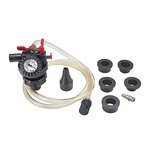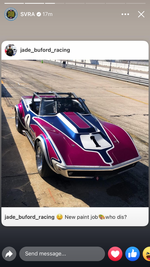SuperBuickGuy
Well-known member
Shipping weight for a 1976 Corvette was 3445, curb weight was 3541. Add 200 lbs for a/c, th400, telescoping steering wheel, power windows, power steering, am/fm radio (18lbs for the radio!)
I'm just under 3200 lbs (3160) with a full tank of fuel (I'm supposed to be 3200 for the class I run in) - with 3 gallons it'd be roughly 3060... which makes your weight even more impressive.
That said, my weight bias is almost exactly 50/50 (within 5 lbs)
One of my scales died, so weighing hasn't happened recently - but once resolved I'll see where I'm at now. I suspect I weigh more
*link https://corvettestory.com/specs/1976-Corvette-specs-options.php
I'm just under 3200 lbs (3160) with a full tank of fuel (I'm supposed to be 3200 for the class I run in) - with 3 gallons it'd be roughly 3060... which makes your weight even more impressive.
That said, my weight bias is almost exactly 50/50 (within 5 lbs)
One of my scales died, so weighing hasn't happened recently - but once resolved I'll see where I'm at now. I suspect I weigh more
*link https://corvettestory.com/specs/1976-Corvette-specs-options.php


